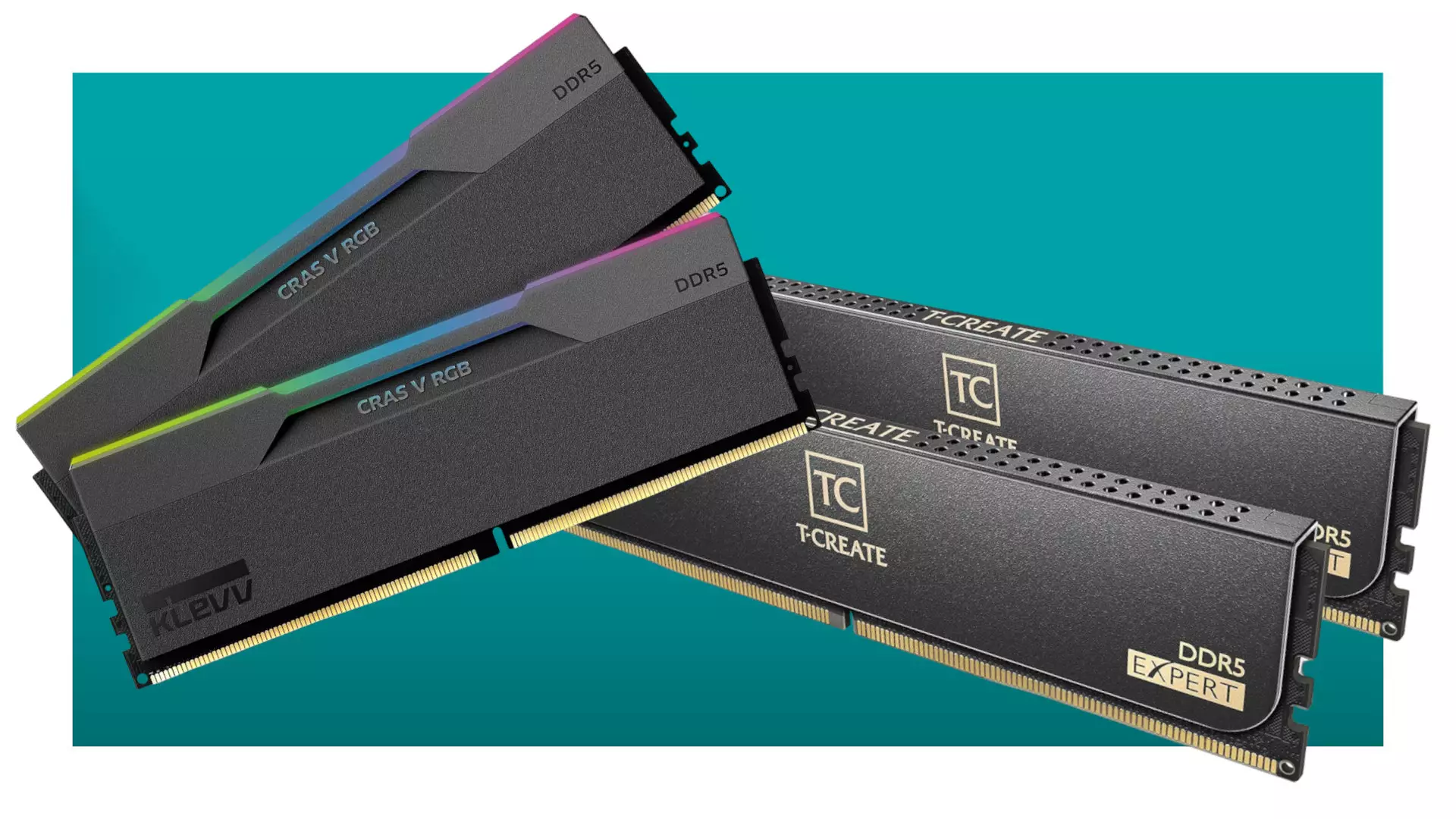When it comes to gaming PCs, the significance of RAM is often understated, yet it fundamentally shapes the overall gaming experience. Many gamers obsess over GPU specs or CPU speeds, but overlooking memory performance can leave substantial bottlenecks unaddressed. The core principle is simple: faster RAM reduces data transfer delays, which translates into higher frame rates, especially in demanding scenarios. However, speed alone isn’t the complete story. It’s a nuanced balance—beyond a certain threshold, increasing clock speeds yields diminishing returns, prompting a shift in focus toward low latency timings.
Latency, measured in cycles like CL28 or CL30, determines how quickly RAM responds to commands from your CPU. A lower latency directly correlates with snappiness, reducing lag and improving minimum frame rates — features critical for a fluid, competitive gaming experience. Building a high-performance gaming rig isn’t about maxing out clock speeds blindly; it’s about harmonizing speed with timeliness. For instance, DDR5-6000 with lower latencies offers substantial benefits without the exorbitant costs of the ultra-fast DDR5-8000 modules. Understanding this balance empowers gamers to maximize their hardware investments.
Strategic Choices: Price, Performance, and Looks in RAM Selection
Contrary to popular belief, premium gaming RAM doesn’t need to siphon your entire budget. In fact, brands like Klevv challenge this misconception by offering high-quality modules at accessible prices. Klevv’s 32 GB DDR5-6000 kit exemplifies this blend of affordability and performance. Despite a seemingly modest price tag, it delivers critical advantages—notably, a CL28 latency, which offers tangible improvements in gaming responsiveness and stability. This lower number equates to fewer cycles needed for data access, resulting in faster reactions during gameplay, and ultimately, a more satisfying experience.
Moreover, aesthetics matter. RGB lighting has become almost a standard feature, but not all lighting is created equal. Klevv’s implementation is both tasteful and classy, elevating your build’s visual appeal without overwhelming it. Additionally, thermal management is often overlooked but is essential for sustained performance. Thick, low-profile heatsinks keep the RAM cool, promoting longevity and stability—factors often sacrificed in cheaper modules.
Alternatively, if budget constraints are tighter, the team behind the T-Create Expert kit offers an outstanding option. At just $87, this RAM provides a competitive edge with a minimal increase in latency (CL30). While it omits flashy aesthetics, it compensates with straightforward, reliable performance—a practical choice for those who prioritize functionality over style. Its compatibility with AMD Ryzen and Intel systems demonstrates that solid, value-oriented RAM can serve as a game-changer without overextending your finances.
Quality Over Quantity: Making Informed Investment Decisions
In the realm of gaming hardware, quality is often overshadowed by the allure of the latest specifications. However, this perspective neglects the critical importance of stability and compatibility. DDR5-6000 modules with thoughtfully calibrated latencies are remarkably reliable, allowing gamers to avoid the pitfalls of overclocking or instability. This is especially relevant considering that countless processors and motherboards can confidently support these speeds without additional tweaking.
The market’s proliferation of options offers an exciting advantage: consumers can tailor their choices to their specific needs and budgets. While faster modules like DDR5-8000 or visually extravagant RGB kits are tempting, they often come with premium prices and marginal gains. Instead, investing in well-designed, thermally efficient, and low-latency modules yields a more consistent boost in performance.
The key takeaway is clarity of purpose. Whether you are building a high-end overclocked beast or a value-oriented gaming rig, understanding the interplay of speed, latency, aesthetics, and price is vital. Choosing wisely means appreciating that in PC gaming, sometimes less is more—particularly when it comes to latency and thermal management—because these elements profoundly impact your gaming immersion and hardware longevity.

